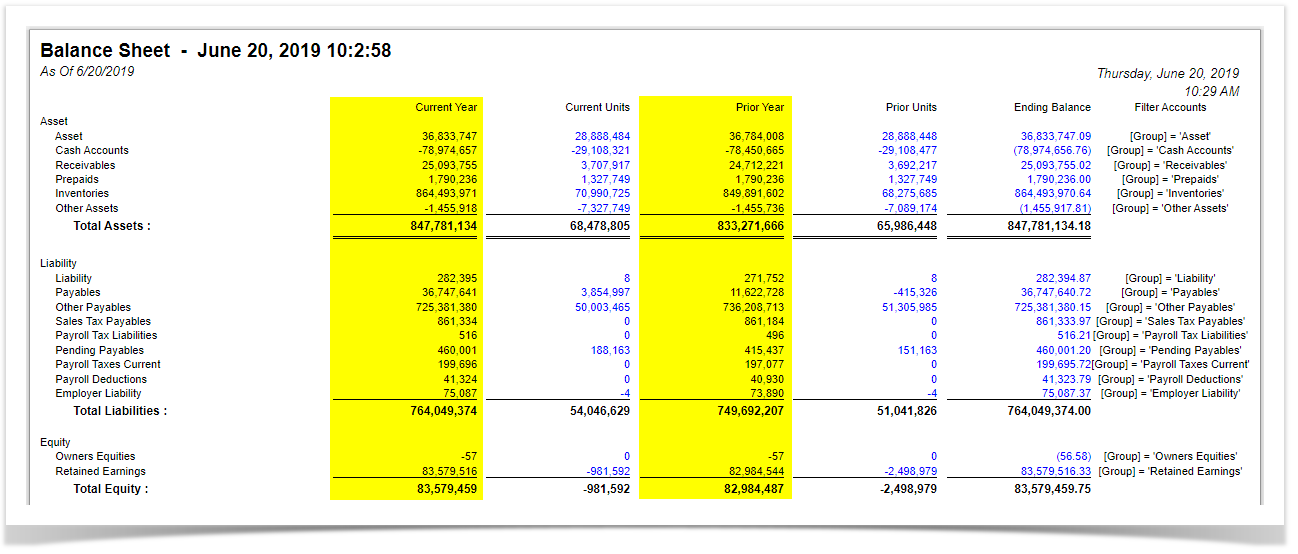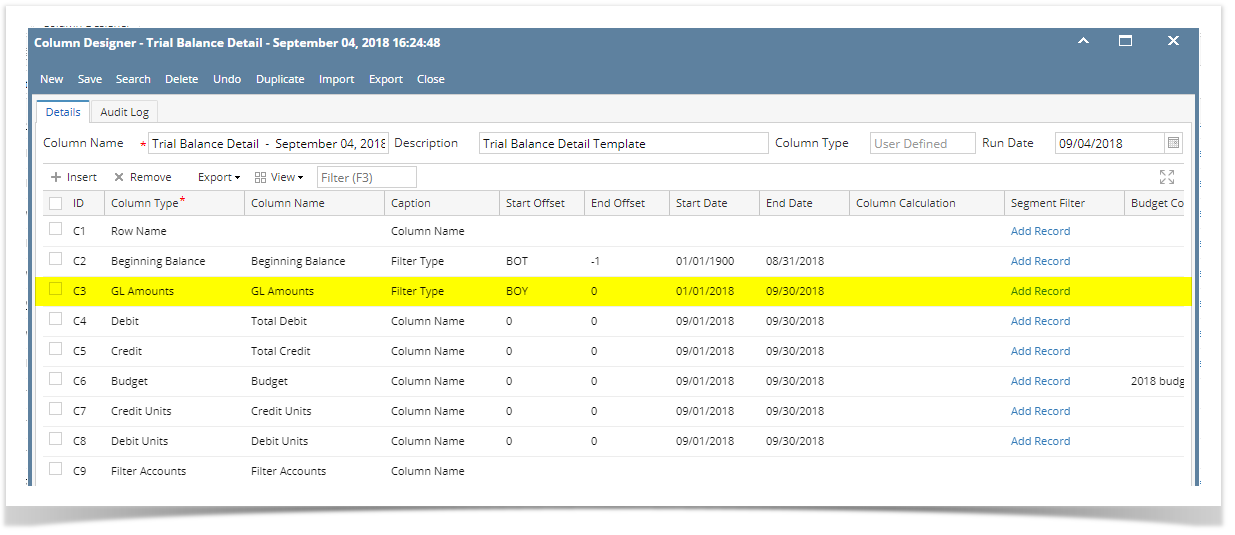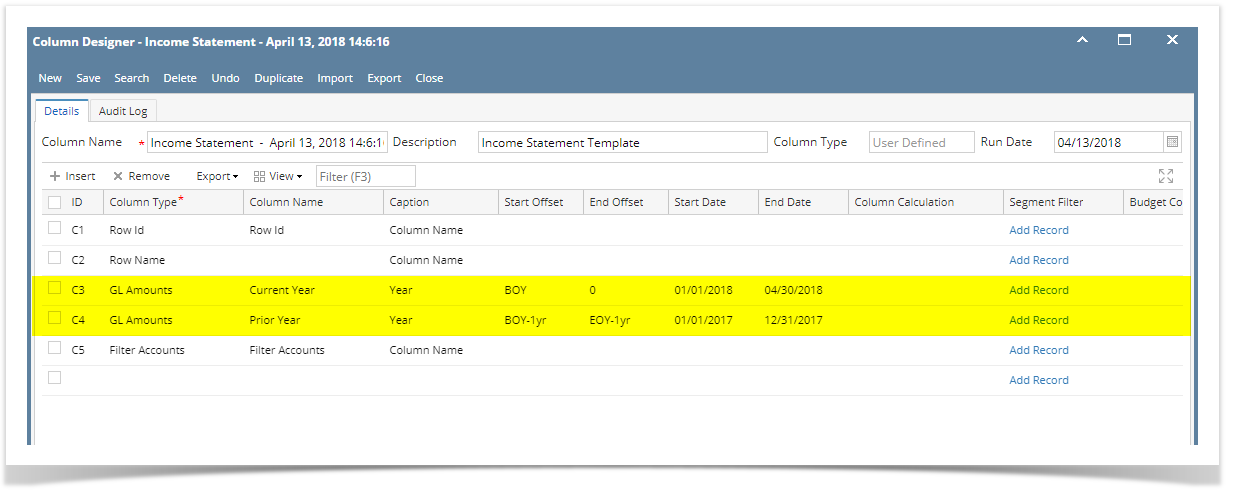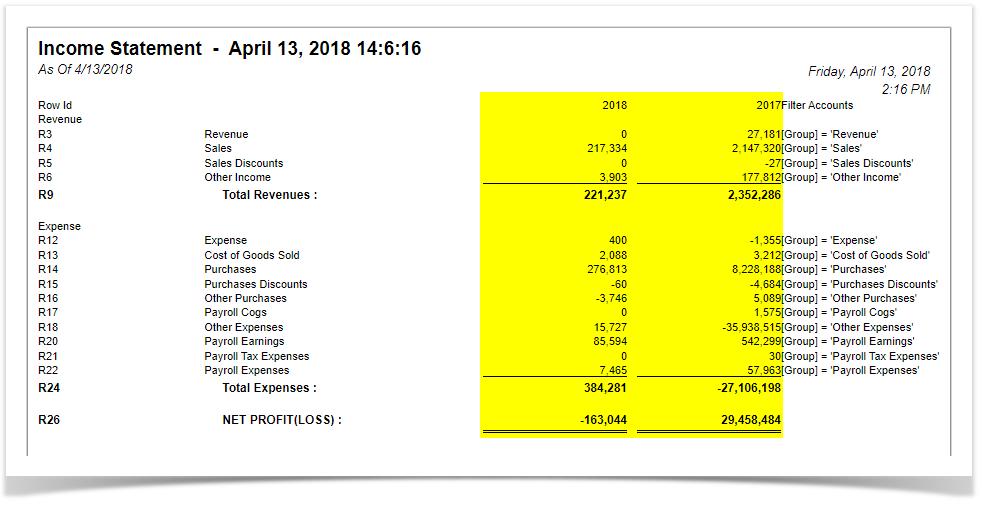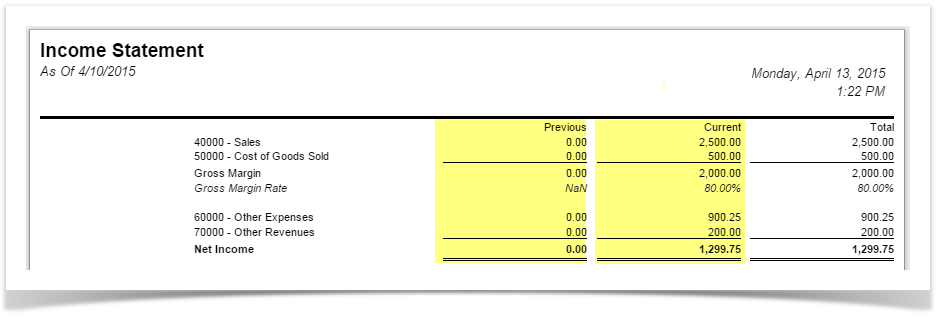The GL Amounts column is used to filter transactions by date. This is computed based on the rows' filtered account/s and the dates configured in the Start Offset and End Offset .
Follow these steps on how to create GL Amounts column type.
- A new row will be available in the grid section.
- In the Column Type field, select GL Amounts.
- In the Column Name field, enter the name you would like to call the column. The value entered in this field may show on your financial report, granted the Caption field for that column is set to Column Name. This is discussed more on How to Add Column Name Row.
- In the Caption field, select the type of caption you want for the column. This is discussed more on How to Add Column Name Row.
- The Start Offset field will be defaulted to BOT, which stands for Beginning of Time. This field is read only to prevent you from modifying it.
- The End Offset field will be defaulted to -1, which stands for Run Date minus 1 month or the previous month. Change this field when you need to.
*When Start Offset and End Offset are combined, it is read as From Beginning of Time up to Previous Month. This is discussed more on How Start and End Offset works. - The Start Date field will show the date based on the Start Offset selected and the Run Date. This gives you a preview of what the Start Date will be. It is only when Custom is selected in the Start Offset field where you need to specify the date. The rest are computed by the system.
- The End Date field will show the date based on the End Offset selected and the Run Date. This gives you a preview of what the End Date will be. It is only when Custom is selected in the End Offset field where you need to specify the date. The rest are computed by the system.
- Leave the Column Calculation field blank.
- The Segment Filter field is useful to this column type since it allows you to specify location/s filter if you need to. This is discussed more on How to Use Segment Filter in the Column Designer.
- Leave the Budget Code field blank.
- Leave the Percentage field blank.
- In the Width field, set it to your desired column width. By default it is set to 160 pixels, which is approximately 1 1/4 inches.
- In the Alignment field, set how the value for the column be displayed.
- Select Center if you want it Centered
- Select Left if you want it Left Aligned
- Select Right if you want it Right aligned
- There is an ability to show or hide the column. Check the Hidden checkbox if you decide to hide the column. This is discussed more on How Hidden checkbox works when enabled.
- All other fields are not anymore necessary so you can leave those out.
This is how GL Amounts column will look like when you follow the above steps.
Here's how it is shown when report is previewed/printed. Highlighted is the GL Amounts column type.
Overview
Content Tools

